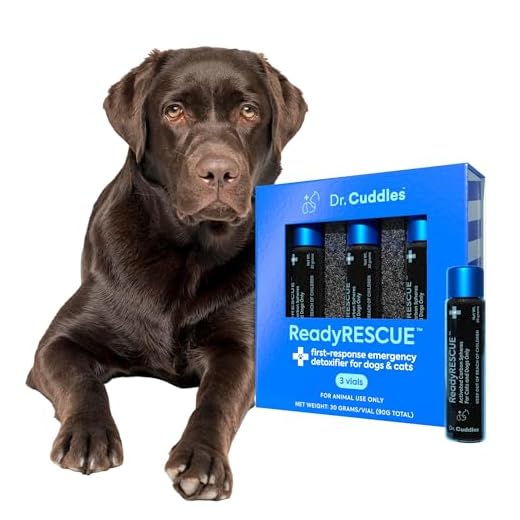

Observe any unusual behavior immediately. If I start refusing food or water, it could signal a problem. Watch for drooling or vomiting; these are often telltale signs of distress. A sudden change in energy levels is also a red flag. If I seem lethargic or overly agitated, don’t ignore it.
Pay attention to my breathing patterns. Labored or irregular breathing can indicate serious issues. Additionally, if there’s any discoloration in my gums–turning pale or bluish–seek help without delay. These symptoms are not to be taken lightly.
Monitor my behavior closely. Sudden aggression or disorientation might mean something’s not right. If I start hiding or acting unusually fearful, that could be another indication. Always trust your instincts; if something feels off, it’s best to consult a vet right away.
Identifying Common Symptoms of Cat Poisoning
Look for unusual behaviors like excessive drooling or vomiting. These signs may indicate distress or discomfort in the body. Rapid breathing or labored respiration can suggest that something isn’t right internally.
Observe for changes in appetite; a sudden refusal to eat or drink might signal a serious issue. Lethargy is another red flag; if a normally playful feline becomes unusually inactive, it’s time to investigate further.
Physical Signs to Monitor
Check for dilated pupils or unusual eye movements, which can indicate neurological problems. Abnormal body temperature, whether too hot or too cold, can also be a symptom of toxic exposure.
A noticeable change in the color of the gums or tongue–such as a pale or bluish tint–warrants immediate attention. Seizures or tremors are critical symptoms that require urgent veterinary care.
Behavioral Changes
Watch for excessive hiding or isolation. If your furry friend suddenly retreats from social interaction, it could point to discomfort or illness. Unusual vocalizations or aggression might also arise as a response to pain or confusion.
Keep a close eye on any combination of these signs. Timely recognition can make a significant difference in the outcome. If anything seems off, seeking veterinary advice should be the next step.
Steps to Take Immediately After Suspecting Poisoning
Contact a veterinarian without delay. Providing them with specific details about potential toxins and symptoms observed is crucial for appropriate treatment.
Gather Information
Collect any packaging or labels of substances that might have been ingested. This information aids the vet in determining the best course of action.
Monitor Behavior
Keep a close watch on any changes in behavior, appetite, and physical condition. Documenting these changes can assist the veterinarian in assessing severity.
If possible, induce vomiting only if advised by a professional. Some toxins can cause more harm if vomited, so it’s essential to seek guidance first. If the vet instructs you to do so, use hydrogen peroxide at the recommended dosage.
While waiting for professional help, ensure a calm environment. Stress can worsen symptoms. If your furry friend shows signs of distress, comfort them gently. Avoid giving food or water unless directed by the veterinarian.
For those considering neutering, here’s a useful link for further inquiry: how much does it cost to get male cat neutered.
When to Contact a Veterinarian for Help
If there’s any doubt about a potential poisoning incident, reaching out to a veterinarian immediately is the best choice. Signs like excessive drooling, lethargy, or unusual behavior warrant urgent professional advice.
If vomiting or diarrhea continues for more than a few hours, don’t hesitate to consult. Persistent symptoms can indicate severe toxicity that requires medical attention.
In case of known toxic substances, such as certain plants or chemicals, providing this information to the vet can greatly assist in determining the necessary treatment.
Even if symptoms appear mild, it’s wise to err on the side of caution. Early intervention often leads to better outcomes.
For those curious about dietary safety, check out this link: can cats eat grape jelly.
Observe any unusual behavior immediately. If I start refusing food or water, it could signal a problem. Watch for drooling or vomiting; these are often telltale signs of distress. A sudden change in energy levels is also a red flag. If I seem lethargic or overly agitated, don’t ignore it.
Pay attention to my breathing patterns. Labored or irregular breathing can indicate serious issues. Additionally, if there’s any discoloration in my gums–turning pale or bluish–seek help without delay. These symptoms are not to be taken lightly.
Monitor my behavior closely. Sudden aggression or disorientation might mean something’s not right. If I start hiding or acting unusually fearful, that could be another indication. Always trust your instincts; if something feels off, it’s best to consult a vet right away.
Identifying Common Symptoms of Cat Poisoning
Look for unusual behaviors like excessive drooling or vomiting. These signs may indicate distress or discomfort in the body. Rapid breathing or labored respiration can suggest that something isn’t right internally.
Observe for changes in appetite; a sudden refusal to eat or drink might signal a serious issue. Lethargy is another red flag; if a normally playful feline becomes unusually inactive, it’s time to investigate further.
Physical Signs to Monitor
Check for dilated pupils or unusual eye movements, which can indicate neurological problems. Abnormal body temperature, whether too hot or too cold, can also be a symptom of toxic exposure.
A noticeable change in the color of the gums or tongue–such as a pale or bluish tint–warrants immediate attention. Seizures or tremors are critical symptoms that require urgent veterinary care.
Behavioral Changes
Watch for excessive hiding or isolation. If your furry friend suddenly retreats from social interaction, it could point to discomfort or illness. Unusual vocalizations or aggression might also arise as a response to pain or confusion.
Keep a close eye on any combination of these signs. Timely recognition can make a significant difference in the outcome. If anything seems off, seeking veterinary advice should be the next step.
Steps to Take Immediately After Suspecting Poisoning
Contact a veterinarian without delay. Providing them with specific details about potential toxins and symptoms observed is crucial for appropriate treatment.
Gather Information
Collect any packaging or labels of substances that might have been ingested. This information aids the vet in determining the best course of action.
Monitor Behavior
Keep a close watch on any changes in behavior, appetite, and physical condition. Documenting these changes can assist the veterinarian in assessing severity.
If possible, induce vomiting only if advised by a professional. Some toxins can cause more harm if vomited, so it’s essential to seek guidance first. If the vet instructs you to do so, use hydrogen peroxide at the recommended dosage.
While waiting for professional help, ensure a calm environment. Stress can worsen symptoms. If your furry friend shows signs of distress, comfort them gently. Avoid giving food or water unless directed by the veterinarian.
For those considering neutering, here’s a useful link for further inquiry: how much does it cost to get male cat neutered.
When to Contact a Veterinarian for Help
If there’s any doubt about a potential poisoning incident, reaching out to a veterinarian immediately is the best choice. Signs like excessive drooling, lethargy, or unusual behavior warrant urgent professional advice.
If vomiting or diarrhea continues for more than a few hours, don’t hesitate to consult. Persistent symptoms can indicate severe toxicity that requires medical attention.
In case of known toxic substances, such as certain plants or chemicals, providing this information to the vet can greatly assist in determining the necessary treatment.
Even if symptoms appear mild, it’s wise to err on the side of caution. Early intervention often leads to better outcomes.
For those curious about dietary safety, check out this link: can cats eat grape jelly.
Observe any unusual behavior immediately. If I start refusing food or water, it could signal a problem. Watch for drooling or vomiting; these are often telltale signs of distress. A sudden change in energy levels is also a red flag. If I seem lethargic or overly agitated, don’t ignore it.
Pay attention to my breathing patterns. Labored or irregular breathing can indicate serious issues. Additionally, if there’s any discoloration in my gums–turning pale or bluish–seek help without delay. These symptoms are not to be taken lightly.
Monitor my behavior closely. Sudden aggression or disorientation might mean something’s not right. If I start hiding or acting unusually fearful, that could be another indication. Always trust your instincts; if something feels off, it’s best to consult a vet right away.
Identifying Common Symptoms of Cat Poisoning
Look for unusual behaviors like excessive drooling or vomiting. These signs may indicate distress or discomfort in the body. Rapid breathing or labored respiration can suggest that something isn’t right internally.
Observe for changes in appetite; a sudden refusal to eat or drink might signal a serious issue. Lethargy is another red flag; if a normally playful feline becomes unusually inactive, it’s time to investigate further.
Physical Signs to Monitor
Check for dilated pupils or unusual eye movements, which can indicate neurological problems. Abnormal body temperature, whether too hot or too cold, can also be a symptom of toxic exposure.
A noticeable change in the color of the gums or tongue–such as a pale or bluish tint–warrants immediate attention. Seizures or tremors are critical symptoms that require urgent veterinary care.
Behavioral Changes
Watch for excessive hiding or isolation. If your furry friend suddenly retreats from social interaction, it could point to discomfort or illness. Unusual vocalizations or aggression might also arise as a response to pain or confusion.
Keep a close eye on any combination of these signs. Timely recognition can make a significant difference in the outcome. If anything seems off, seeking veterinary advice should be the next step.
Steps to Take Immediately After Suspecting Poisoning
Contact a veterinarian without delay. Providing them with specific details about potential toxins and symptoms observed is crucial for appropriate treatment.
Gather Information
Collect any packaging or labels of substances that might have been ingested. This information aids the vet in determining the best course of action.
Monitor Behavior
Keep a close watch on any changes in behavior, appetite, and physical condition. Documenting these changes can assist the veterinarian in assessing severity.
If possible, induce vomiting only if advised by a professional. Some toxins can cause more harm if vomited, so it’s essential to seek guidance first. If the vet instructs you to do so, use hydrogen peroxide at the recommended dosage.
While waiting for professional help, ensure a calm environment. Stress can worsen symptoms. If your furry friend shows signs of distress, comfort them gently. Avoid giving food or water unless directed by the veterinarian.
For those considering neutering, here’s a useful link for further inquiry: how much does it cost to get male cat neutered.
When to Contact a Veterinarian for Help
If there’s any doubt about a potential poisoning incident, reaching out to a veterinarian immediately is the best choice. Signs like excessive drooling, lethargy, or unusual behavior warrant urgent professional advice.
If vomiting or diarrhea continues for more than a few hours, don’t hesitate to consult. Persistent symptoms can indicate severe toxicity that requires medical attention.
In case of known toxic substances, such as certain plants or chemicals, providing this information to the vet can greatly assist in determining the necessary treatment.
Even if symptoms appear mild, it’s wise to err on the side of caution. Early intervention often leads to better outcomes.
For those curious about dietary safety, check out this link: can cats eat grape jelly.








